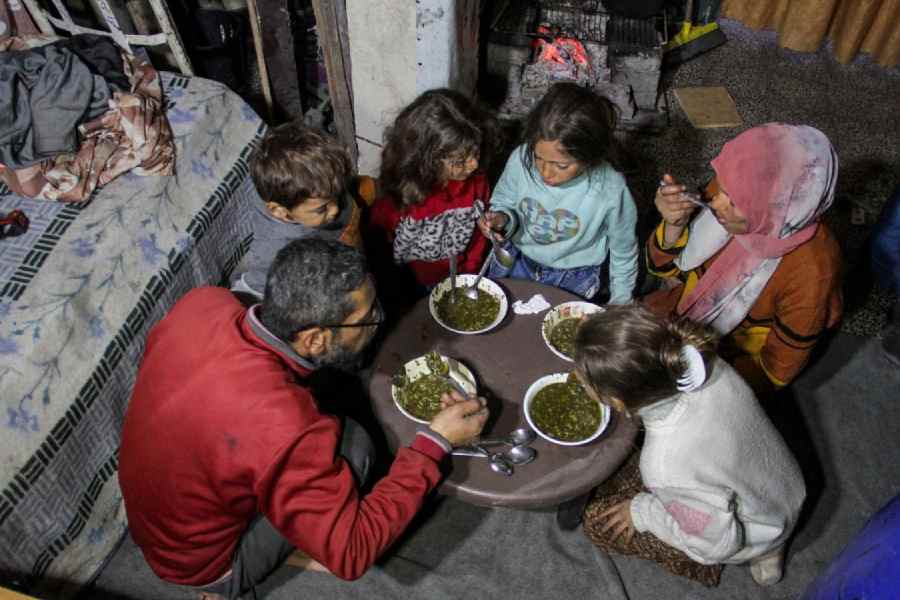As the Israeli military campaign to destroy Hamas pummeled his neighbourhood in northern Gaza, reducing buildings to rubble and forcing residents to flee, the Palestinian labourer realised that he was running out of food.
The shops had closed, the markets had emptied and fighting prevented supplies from reaching them. So he and his remaining neighbours gathered a plant known as khobeza that grew near their homes and cooked it to sustain themselves, he said.
“It supported us more than everyone else in the world,” the labourer, Amin Abed, 35, said recently by phone from Gaza. “People survived the darkest chapters of the war on khobeza alone.”
For many generations, the people of the Holy Land have foraged for khobeza, a hearty green with a taste and texture somewhere between spinach and kale that sprouts in knee-high thickets along roadsides and empty patches of dirt after the first winter rains. Cooks sauté it in olive oil, season it with onions or boil it into soup to make tasty, low-cost meals.
Now, this green, a variety of mallow, is making up an outsize portion of many Gazans’ diets by providing an inexpensive way to blunt hunger. At a time when most other food is largely unavailable or prohibitively expensive, Gazans can harvest khobeza themselves and cook it by itself, or with a few other ingredients.
As Israel has imposed a near-complete blockade on the territory, aid groups and United Nations officials have increasingly warned that the amount of food entering Gaza cannot feed its roughly 2.2 million people, pushing ever larger numbers of Gazans toward catastrophic hunger. Malnutrition-related deaths have become more common, and an international group of experts warned last month that the entire population of Gaza faced acute food shortages and that famine-like conditions were “imminent” in the north, where aid is scarce.
“People don’t grasp how empty and dire the situation is there, from the price of a bag of flour to a bag of onions,” said Reem Kassis, a Palestinian writer who included a khobeza recipe in her most recent cookbook.
The plant, which is also eaten in Jordan, Lebanon, Syria, the Israeli-occupied West Bank and elsewhere, grows wild and has a relatively mild flavour. In normal times, it is often seasoned with lemon juice or chilli pepper.
Kassis said her mother’s family cooked it as a thick stew, filled with caramelised onions and drops of dough. Her father sautéed the plant in olive oil and drizzled it with lemon juice.
“It is considered a humble meal, not something you would serve your guests,” Kassis said. “In the absence of anything else, it is nutritious. You can stretch it, you can add dough or bread, you can add onions.”
In Gaza, where ingredients are scarce, many families boil it into a thin soup that can be shared among large numbers of people.
“We have been eating khobeza since the time of our ancestors,” said Sulaiman Abu Khadija, 32, an agricultural worker. “One generation passed it to another.”
New York Times News Service










